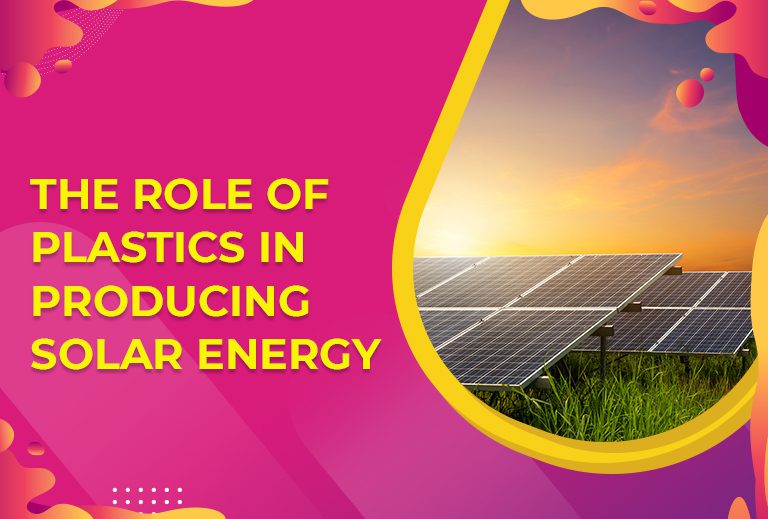The Role Of Plastics In Producing Solar Energy
It’s nearing almost 70 years since Bell Laboratories created introduced the first solar cell. The event was widely publicised as the beginning of our world’s pursuit of harnessing the sun’s limitless energy for the use of mankind.
It’s 2023 and even though the adoption of solar energy has grown exponentially, there is a lot of work to be done. One positive is that solar energy has become more efficient and cheaper to produce, partly due to help from the plastic industry.
Not many are aware that solar cells are practically boxes full of PV or photovoltaic cells that convert light into electricity. PV cells are very fragile and need protection to last for longer periods.
PV cells are made to withstand the harsh outdoors for years by sandwiching the cells in between protective materials that are a combination of plastic and glass. Let’s explore this further.
PV cells are first arranged on a glass plate that’s covered in a plastic sheet. Then, another encapsulated plastic sheet is placed in the back of the cells. This is followed by a durable plastic back sheet. All of this is laminated to ensure efficient sealing and make the solar power system water-resistant.
So, plastic plays a pivotal role in ensuring that PV cells are safeguarded. The plastic bonds, seals, and insulates the cells. What’s more, they are transparent, allowing you to check on the health of the cells or for any physical damage.
Apart from directly safeguarding the cells, plastic is also used as electrical insulators, valves, pipes, and fittings essential to create solar energy. Also, you can’t transfer electricity generated from solar panels to appliances and devices without wires sheathed in plastic.
The Future
For many decades, glass was an essential component of solar panels because plastic could not have the desired sturdy effects of glass. With new technology, it’s now possible to opt for the mass production of solar panels by using plastic.
Solar panels that don’t use glass at all will weigh only half their original weight and can be installed on delicate roofs. Plastic can replace glass, thanks to adding the right amount of additives to plastic. This makes the plastic sturdy and transparent just like glass.
The link between plastics and solar power will be explored in detail at Plastivision 2023 (December 7-11). The prestigious event will be held at the Bombay Exhibition Centre, Mumbai. Be a part of this event to meet the best minds in the industry. Make new connections and learn all there’s to know about plastic technology at Plastivision 2023! We look forward to your presence.
Leave a Reply Cancel reply
Recent Posts
- Understanding The Materials That Are Used To Build Plastic Toys
- All You Need To Know About Food-grade Plastics
- A Glance At The Materials That Boost The Performance Of Plastics
- Understanding The Importance Of Exploring New Business Opportunities In The Plastic Industry
- Understanding The Importance Of Investing in R&D For The Plastic Industry
Categories
- 3D Printing
- AIPMA
- Automation
- Automobile Sector
- Bio Plastics
- Environment
- Innovations In Recycling
- Latest Innovations
- Molds & Dies
- News
- Packaging Industry
- Plastic
- Plastic Application
- Plastic Industry
- Plastic Market
- Plastic Myths
- Plastic News From The World
- Plastic Packaging
- Plastic Products
- Plastic Recycling
- Plastic Solar Cells
- Plastic Toys
- Plastic Waste
- Plastic World
- Plastics
- Plastics And Their Applications
- Plastics In Agriculture
- Plastics In Healthcare
- Plastics In Medical Industry
- Plasticulture
- Processing Machinery
- Recycling Machines
- Robotics
- Uncategorized
- Virtual Reality
Archives
- November 2023 (3)
- October 2023 (2)
- September 2023 (3)
- August 2023 (3)
- July 2023 (3)
- June 2023 (3)
- May 2023 (2)
- April 2023 (2)
- March 2023 (2)
- February 2023 (2)
- January 2023 (2)
- December 2022 (3)
- November 2022 (1)
- October 2022 (1)
- September 2022 (2)
- August 2022 (1)
- July 2022 (3)
- May 2022 (3)
- March 2022 (2)
- February 2022 (1)
- January 2022 (1)
- September 2021 (2)
- August 2021 (3)
- July 2021 (4)
- June 2021 (4)
- May 2021 (3)
- April 2021 (2)
- March 2021 (4)
- November 2019 (8)
- October 2019 (8)
- September 2019 (8)
- August 2019 (8)
- July 2019 (8)
- June 2019 (8)
- May 2019 (8)
- April 2019 (8)
- March 2019 (8)
- February 2019 (11)
- January 2019 (8)
- December 2018 (8)
- November 2018 (12)
- October 2018 (12)

